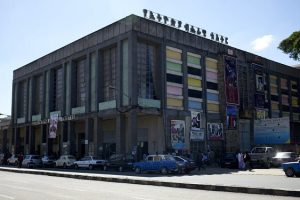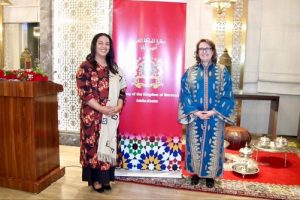BY ABEBE WOLDEGIORGIS
A fine art is an offshoot of philosophy which deals with arts in a scientific way. Science has its own study and research methods. When we come to arts, they as well are researched. The creative art is also the outcome of study and research.
In addition, it is transferred from generation to generation and remembered well.
Sinidu Tefera is an art curator in the Ethiopian Fine and Arts Heritage. In her recently published study paper she indicated that, seen as antiquity, fine and arts reflect the nation’s current situation, hopes, happiness, development, social interaction, politics, religion, history, culture, creativity and vision.
In addition to promoting the nation’s good image, it generates income from local and international tourists.
It also plays a crucial role in teaching nations and nationalities to know their history, culture, each other and exchange experiences. It also allows people to introduce their history and culture to the outside world through creative arts.
As to Sinidu, a country can improve its image, if it properly utilizes fine arts. It can also strengthen its relations with other countries and develop its cultural exchanges. To make the country, the looked-forward tourists destination antiquities found in monasteries, churches, mosques, gallery and cultural centers play a crucial role.
They can also be utilized as inputs to prepare exhibitions, to promote the society’s culture and to introduce to the outside world.
As individuals refresh their spirits by visiting fine and arts in tourist sites, exhibitions also allow recreation. They uplift visitors’ emotions and enable them derive satisfaction.
Education with regard to the nation’s history, culture creative works can be imparted on children by introducing them to galleries established in various parts.
Feasting one’s eyes on paintings hanged on walls in tourist spots, hotels and other places in addition to entertaining visitors, help them to better known human history. It is also vital in developing human’s creative skills.
According to Sinidu, advancing knowledge with regard to fine and arts and antiquities, helps to pay attention to relics found in museums and maintain them responsibly.
This helps them to protect them from damage. It also helps to daily or weekly set them to get fresh air and sun light. Keeping them neat is vital. Such activities are a duty of conservators, painters and curators. Contrary to this, maintaining antiquities by unskilled individuals rather damages the valuables.
To do the maintaining work, beforehand professionals must protect their physical security and take precautionary measures to the properties.
They have to use hand gloves, face and nose masks and use eye glasses. They should also wear gowns. In addition, in order to maintain the damaged properties preparing special place and laboratory is helpful to make pre study work in the nearby museum. This is essential. Because repairing them on the spot might further damage them.
Side by side with handling antiquities establishing better places for them must be prioritized to prolong their life span. The laboratories must be equipped with cutting -edge technologies so that conducting well-researched tasks helpful for extending their life span can be possible.
Scientific studies could be conducted in the laboratories regarding the antiquities: types of paints, materials used for paintings and supports.
As to Sinidu, multispectral imaging is an instrument used for looking something or picture from different angles. Instruments which create the situation are Ultra-violate, visible and infrared that affords a better sight to the looker.
The other equipment which enables the on looker to see the painting in proper way can be mentioned here.
VIS-visible lights enable the visitor to identify the correct color of the photo and visualize correctively, RAK-Racking light enables to see parts of the damaged picture and the upper part of it.
UVF-Ultra-violate Fluorescence helps to identify the previous damage and maintained part of the picture through utilizing rays.
IRR-Infrared Reflectography through lighting on the picture enables the viewer to look the lower part of the picture.
IRFC- Infrared False Color when the visible part of the picture touches the lower part of the picture indicates various ingredients utilized to paint the picture and other parts.
IRF- Infrared fluorescence helps the viewer to look at what type of chemical the painter used to draw the picture.
IRF-Infrared when the end part of the picture and the back of the left side exposed to light indicates what type of technics the painter utilized while drawing the picture.
There are also other instruments helpful to identify the types of the picture. For example, digital camera can capture visible light and UV and sometimes IR images with filters.
Infrared Sensitive Camera–to capture longer wave lengths. X-Rays are often taken to detect areas of various heavy metals found in paints such as lead, tin and mercuric sulfide. X-Ray fluorescence is a technique used to identify the chemical composition of the materials used to make the paint.
Scanning techniques that images with elements’ specific characters that are able to reveal underlying paint layers. On the other hand, terahertz imaging can enable one to see hidden layers and expose defects like delamination and void high light previous restorations like relining; they can be used before restoration.
To prolong the life span of the antiquities and to protect them from damage various methods are applied in various countries. There are traditional and modern techniques used to protect them. When the generation vigilantly protects fine and arts they will be transferred to the coming generations. Hence, the youth should understand this because they are part of our identity.
As a historical nation, Ethiopia has abundant artifacts but due to many factors, among others wars and natural disasters, the heritages are looted and burned.
Currently, some looted artifacts are repatriated from abroad by dedicated Ethiopians and Foreigners through strong diplomatic efforts. But still there are some in foreign countries. Therefore, devoting time and energy to bring back our historical assets must be a duty of all citizens.
The Ethiopian Herald March 5/2021





